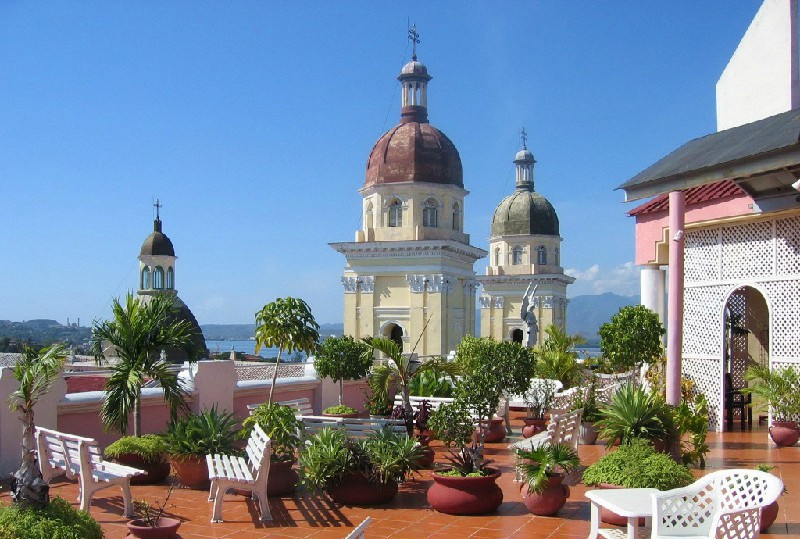Information about Trinidad Cuba
Rating: 7,6/10 (366 votes)  HistoryTrinidad is a museum city, or a monument city, founded in 1514 by the conquistador Diego Velazquez. The city is built up mainly with one-story pink and yellow houses. In the center of the city there are houses and churches built in the 18th-19th centuries. For a long time, the city was surrounded by walls. That contributed to the fact that all the buildings and the pavement were perfectly preserved. Trinidad is one of the first Spanish settlements in America. The inhabitants of the new settlement were engaged in the cultivation of tobacco and sugar cane. The city thrived on smuggling, and the plantations were mostly slaves. Trinidad blossomed, a magnificent colonial city was built with cobblestones, palaces, Catholic churches. In the middle of the 19th century, a liberation movement began, which led to the that Trinidad from the economic center became an ordinary provincial city. In 1988, the city was declared a World Heritage Site by UNESCO. Today the city is developing at the expense of livestock, tobacco products, coffee production, fishing and tourism.  TourismTrinidad is a typical colonial city, lavishly decorated, with cobblestones, palaces and Catholic churches. Most of the houses are painted dark red. Trinidad is called a city-museum, all the old buildings have been preserved in their original form and walking along its streets, you seem to be transported in time. The main square of the city - Plaza Mayor - is surrounded by houses, most of which are museums. Among them is the mansion of the Sanchez Isnaga family - today the Museum of Trinidad Architecture, the Museum of Romanticism, the Archaeological Museum, the Anti-Bandit Museum, the Alexander Humboldt Museum of Natural Sciences and the Guamuaia Archaeological Museum. Citizens and tourists love to stroll in the picturesque Sespendes Park, where the famous pizzeria is located. In addition to the general architectural originality in Trinidad, tourists are attracted by the Church of the Holy Virgin Mary of Candelaria, the Monastery of St. Francis, museums with rich collections of unique exhibits, an art gallery. Favorable climatic conditions have contributed to the creation of a health center in Trinidad. In one of the districts of the city is the National Center for Health Rehabilitation, which uses traditional medicine techniques, physiotherapy treatments and exercises to help combat stress. In addition, 12 kilometers south-west of the city is the six kilometers long Ancon sand spit with a picturesque clean beach with white fine sand and a stunning underwater world of coral reefs. The beaches of Maria Aguilar and Ancon are the best beaches in southern Cuba. Cayo Blanco Island is 300 meters from the coast. The island is connected to the coast by a narrow platform with a sandy bottom covered with black corals, which form reefs and grottoes, where a variety of tropical fish, jellyfish and sponges live. This place is the best for diving. AttractionsChurch and Monastery of St. Francis is one of the symbols of the city. The convent was founded in 1813, after that it housed a Spanish garrison, later a school. Today it houses the Museum of Combating Bandits. Church of the Holy Trinity - a 19th century church in Trinidad, the largest church in Cuba. It differs from other temples with amazing acoustics. Museum of Colonial Architecture is a museum in Trinidad, housed in the Sanchez Isnaga family mansion in the southern part of Plaza Mayor. It is a unique, one of a kind architectural museum in Cuba. Museum of Romanticism - one of the most beautiful and interesting museums in Trinidad, located in the palace of Count Brunet. The museum possesses an extensive collection of household items, interiors, paintings in the romantic style. The exhibits are perfectly combined with the setting of the castle, owned by the owner of the sugar plantations. Historical Museum - a museum where you can learn the history of the city from the very foundation to the present. Here are exhibits that tell the history of the province as a whole. The History Museum is housed in the 19th century Neoclassical Palace of Cantero. The Escambray Mountains - a ridge stretching north of Trinidad, rises 800 meters above sea level. Here is a protected natural area, surprisingly picturesque and of great importance from a scientific point of view. National Topes de Collantes Park - a park created for protection of rare species of animals and plants. The park area is 200 sq. km. All of these areas are riddled with hiking trails through green valleys, mountain peaks, waterfalls and rivers. Here, in particular, you can see one of the largest waterfalls in the country - El Caburni. Manaki Isnaghi Tower is a 45 meters high tower located in the vicinity of the city. Built in 1816, it was intended to supervise slaves working on cane plantations. From here, a signal was given to start and finish work. Plaza Mayor is the main city square in Trinidad. All buildings on the square have been restored, most of them turned into museums. There is an elegant ensemble of buildings in the colonial style of the Archaeological Museum, which displays an extensive collection of household items and tools of local Indians. The square also houses the Architectural Museum, the Church of Santisima Trinidad, the Museum of Romanticism, the Church of San Francisco, the Museum of Alexander von Humboldt, who spent only two days in Trinidad in 1801, and other museums. We also recommend reading Information about Trabzon resort in Turkey Topic: Information about Trinidad Cuba. |




